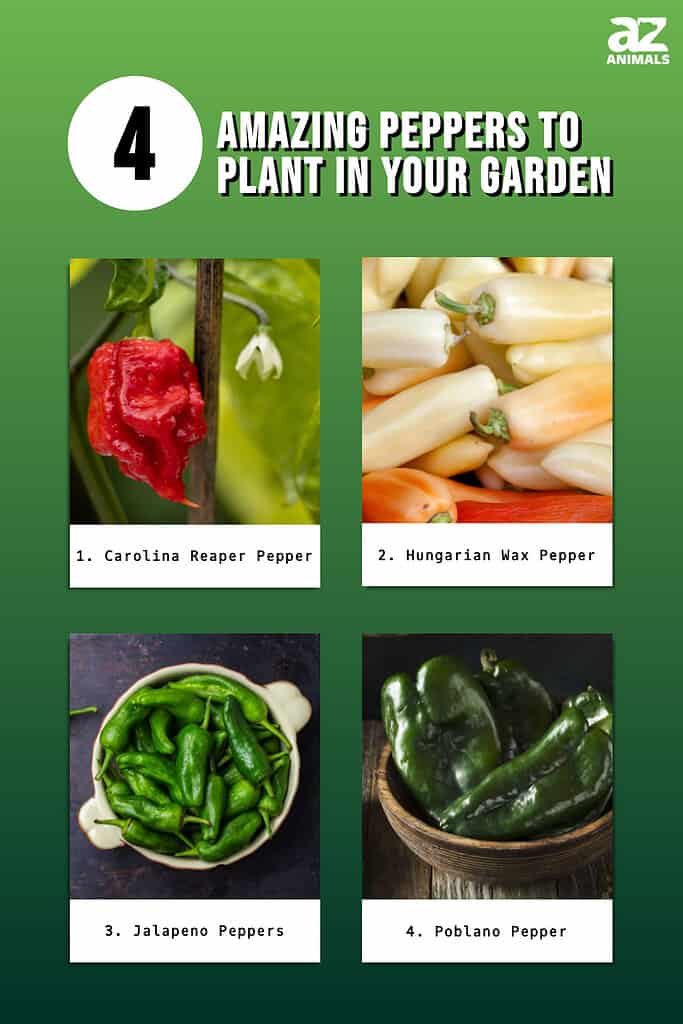
Peppers are versatile fruits that add color, flavor, and texture to any meal with their diverse range of taste sensations. Whether you’re looking for something mellow and mild or extremely spicy, peppers can elevate your dishes from mundane to magnificent. Did you know that peppers also provide exceptional nutritional value? High levels of vitamins A and C and antioxidant properties benefit digestive health and metabolism. Including peppers in your gardening venture offers the promise of not only growing your own produce but also improvements in one’s personal well-being. In this blog post, you will discover an amazing selection of pepper varieties that would certainly thrive in your garden.
4. Poblano Pepper (1,000 to 2,000 Scoville Units)
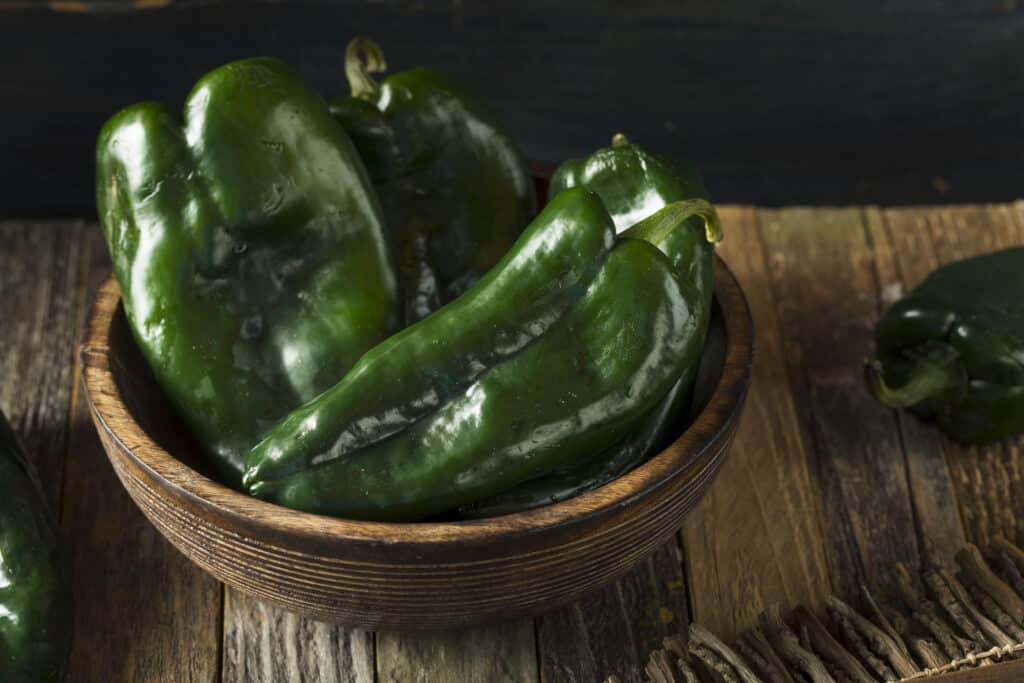
Poblano peppers thrive in a variety of environments and are one of the easier peppers to grow in your garden.
©Brent Hofacker/Shutterstock.com
Considered one of the most distinctive peppers available, the Poblano pepper adds an exceptional flavor that blends mild heat with earthiness. Thanks to the versatility of Poblano peppers, these plants can thrive in various environments, including garden beds and containers. Thus, they are easy peppers to grow in a garden. Cultivating these peppers requires a certain amount of patience, as their growth period can span anywhere from 70 to 90 days after being transplanted. As the plants start to grow, they produce dark green fruits, which eventually turn into vibrant red peppers upon reaching maturity.
To promote successful growth amongst pepper plants, planting seeds or seedlings early in the summer is best. It’s essential that soil temperature readings have exceeded a consistent rate of 60°F before planting commences. An adequate amount of space between plants ensures long-term development, and planting peppers around 18 inches apart can enable this ideal spacing factor. Watering requirements must also be addressed during pepper maturation; regular watering can keep their growing grounds optimally moist while preventing over-saturation.
3. Jalapeno Peppers (2,000 to 8,000 Scoville Units)
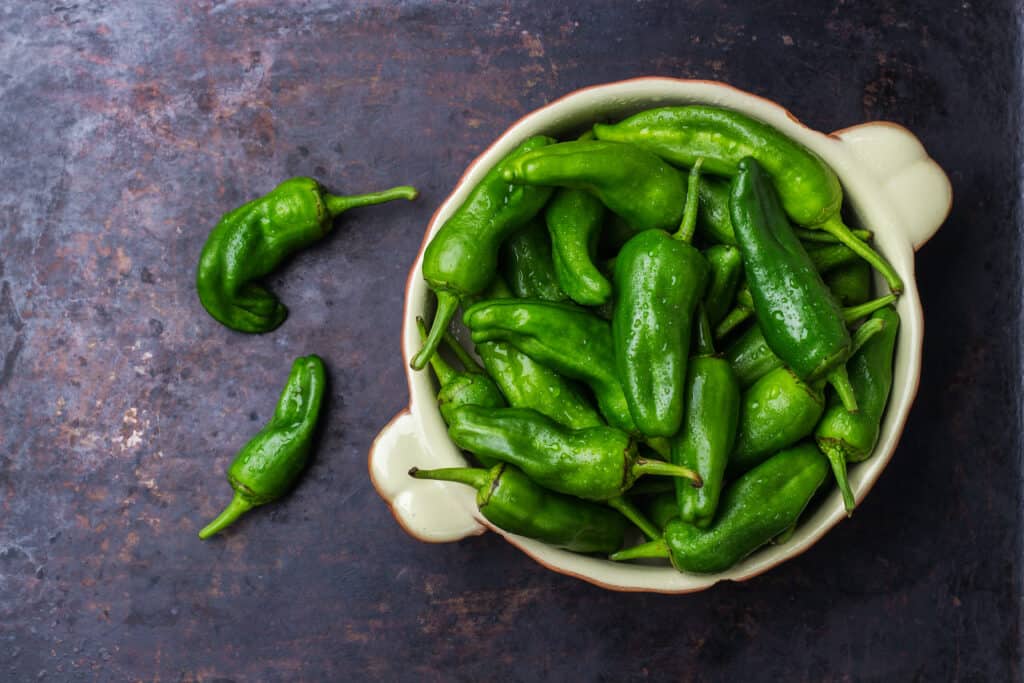
These peppers like warm weather conditions.
©Antonina Vlasova/Shutterstock.com
Jalapeno peppers are appreciated for their balanced flavor profile. They feature a gentle heat and pleasant notes of sweetness and tanginess. To grow jalapeno peppers, one can use the method of planting seeds or purchasing ready-grown seedlings. These fruits thrive in warm weather conditions, especially when fully exposed to sunlight. Nevertheless, if external circumstances delay their growth, like living in colder regions, you may easily cultivate them within containers at home.
Successful planting of jalapenos begins with selecting potting soil that consists of neutral Ph levels. Furthermore, position your seeds or seedlings 12-18 inches apart to allow their roots to grow freely. Pay close attention to your soil’s moisture levels throughout each stage of the growth process. Excessive watering can cause poor health and growth in your Jalapeno plant. Additionally, it will take roughly 70 to 90 days before reaching maturity. The Jalapeno pepper transitions from green to red, signifying its growth. However, you can harvest it when ripe, regardless of its color.
2. Hungarian Wax Pepper (5,000 to 15,000 Scoville Units)
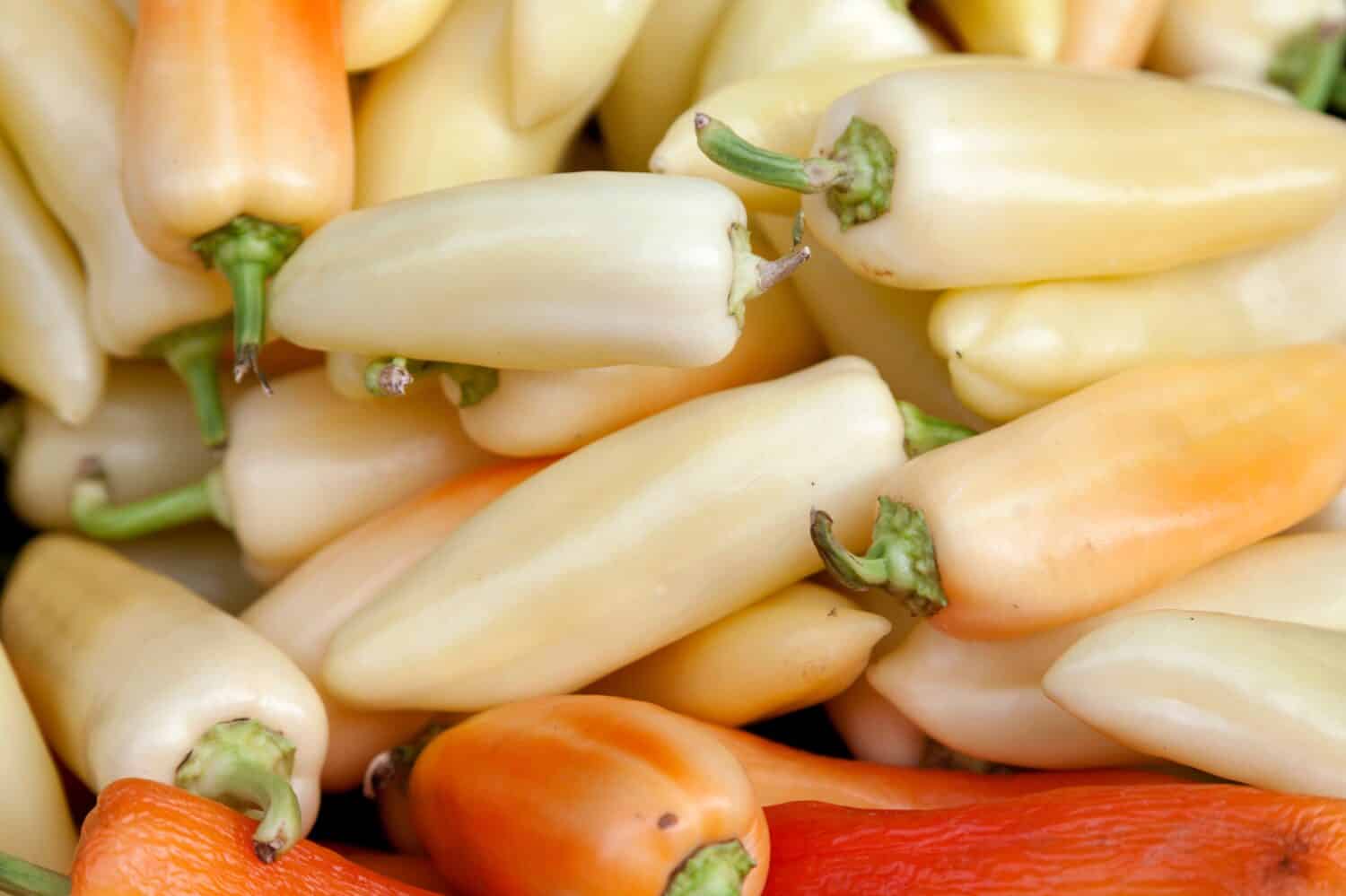
Hungarian wax peppers can have a wide variety of Scoville Scale ranges.
©BreizhAtao/Shutterstock.com
The Hungarian Wax Pepper has a creamy-yellow hue that offers sweet and tangy flavors. This pepper is well-balanced as it adds just enough heat without overwhelming the aroma of your dish. The Hungarian Wax pepper is a great ingredient to add to salads, salsas, and homemade medium hot sauces. To achieve flowering of these crops, plant your peppers in an area of your garden that gets plenty of sunshine. The Hungarian Wax pepper grows best in warmer weather.
Prepare your flower bed with a rich nutrient compost and space each seedling 18 inches apart for optimum growth. With a suitable amount of attention and watering, your plants are sure to flourish and grow into healthy and delicious peppers. Hungarian Wax Peppers usually need about 70 to 80 days from transplanting before reaching maturity. After this period of growth, your pepper pods may appear in diverse sizes, with the smallest measuring four inches while others reaching up to six inches long. Once reaching the desired size and color, your peppers require harvesting.
1. Carolina Reaper Pepper (2.2 Million Scoville Units)
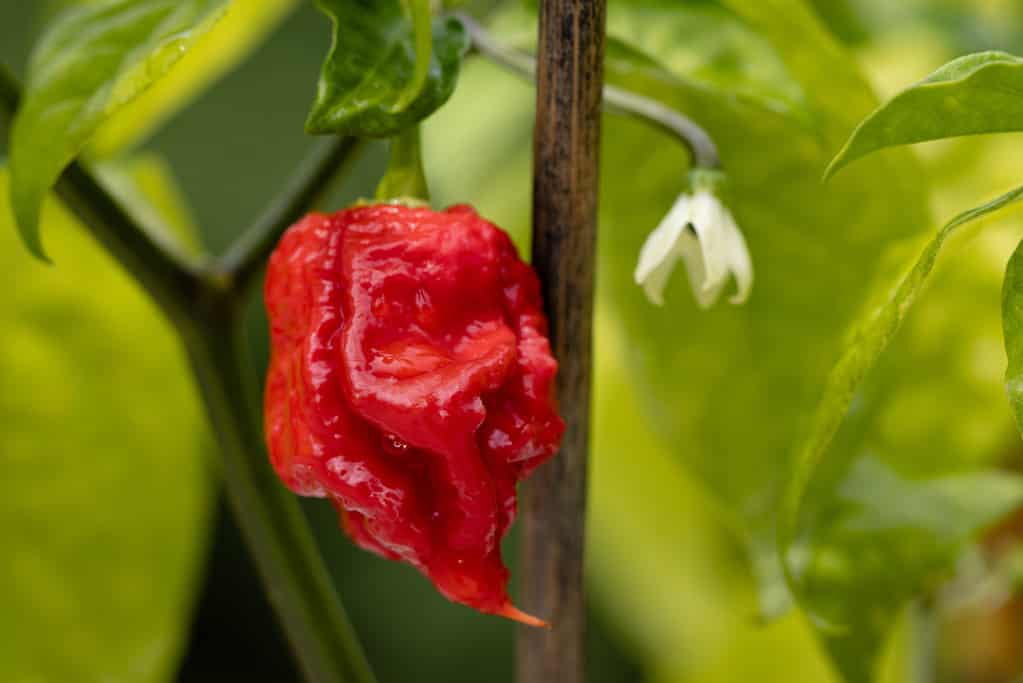
The Carolina Reaper pepper is one of the spiciest peppers in the world.
©iStock.com/Wirestock
An infamous ingredient in culinary circles, the Carolina Reaper holds a position as one of the world’s spiciest peppers. Puckerbutt Peppers in North Carolina came up with this hellfire pepper. The Reaper’s potent heat and strong taste demand respect from all who dare to try it. For those interested in growing Carolina Reaper peppers, starting with seeds is recommended. These specific plant species require warm conditions for germination. Therefore, utilizing a seedling heat mat may prove beneficial in promoting expedited growth.
In addition, for your peppers to grow successfully, use well-draining soil for planting while keeping it moist throughout. Also, it’s vital to provide these plants with full sunlight exposure by choosing a sunny spot for them. Carolina Reaper Peppers require about 90-120 days for optimum growth. Like many members of the Capsicum family, other factors like environmental settings and desired ripeness level impact how long your plants take to reach maturity. One thing to remember with these ultra-hot peppers is extreme caution, especially if your first experience with a capsaicin substance. They are known for causing severe irritations, so handle them carefully.
Summary of 4 Amazing Peppers to Plant in Your Garden
| Rank | Pepper | Degree of Heat |
|---|---|---|
| 1 | Carolina Reaper Pepper | 2.2 Million Scoville Units |
| 2 | Hungarian Wax Pepper | 5,000 to 15,000 Scoville Units |
| 3 | Jalapeno Peppers | 2,000 to 8,000 Scoville Units |
| 4 | Poblano Pepper | 1,000 to 2,000 Scoville Units |
The photo featured at the top of this post is © BreizhAtao/Shutterstock.com
Thank you for reading! Have some feedback for us? Contact the AZ Animals editorial team.






